
(10.13.05) Decibel isn’t just about banging beats and slapping vinyl around. Both weekend days offered more cerebral activities: panel discussions about the present and future of digital music and the intersection between art and technology, as well as hands-on workshops where some of the modern toys were demonstrated. Now, I have to confess that I get vertigo just from looking at the interfaces for Traktor or Ableton Live. Participating in workshops and actively discussing use of these products would make my head explode. I just love the music for what it sounds like; making it is just something that I don’t think I’m terribly wired for. So, I can’t really say what went on during these clinics, but hey, they were there and it’s great that Decibel understood that a good number of the attendees had more than a passing interest in making music as well as nodding their heads to it. (There were also clinics on mastering for vinyl, mastering for 5.1 surround sound and circuit bending with household toys. All good things, all for smarter kids than I.)
Saturday had the busiest schedule for music, starting at 6:00 PM with the experimental showcase before splitting off into three distinct tracks for the remainder of the evening (the Mutek/Musique Risquee showcase, electro-pop, and small-scale knob twiddling). Having had nearly 48 hours to recover from the fantastic Merck showcase (yeah, yeah, I missed Friday; I’m old and need recovery time, and I am still wracked with guilt that I couldn’t find the energy to drag my ass back up to Seattle to see Apparat on Friday — old bones, remember?), I was ready to soak up as much of the evening as I could.
The Experimental Showcase took place at the Broadway Performance Center, a sit-down theater with about 300 seats. We were packed in like sardines (double-stacking ’em in the aisles by the end) as the lights came down and Son of Rose started the head-scratching evening with oblique textures and sonic time-stretching. The project of Kamran Sadeghi, Son of Rose welds sine waves and rumbles of static to jagged line drawings that darts around the video screen backdrop. As Sadeghi adds textures and layers of sonic scrap to the simple sine wave foundation, colors start to bleed into his black and white imagery and the room begins to feel a little more humid as if we are witnessing heat lightning banging against the edge of the horizon. Lights flash and vanish, leaving retinal burn and the beatless sounds roar and wash over us like sharp arcs of expressed sound. In the end, he explodes with a sharp pop of sound, a spatter of feedback like he’s just breached the sound barrier. More pops follow, a cascade of noise bursts that trail in the wake of the initial fracture. Pop. Pop. Poppoppop.

The second act of the Experimental Showcase is Hakea, another Seattle-based act. A goodly amount of Decibel is Pacific Northwest-based — one of the music tracks on both Saturday and Sunday focus exclusively on local talent — as the promoters of the festival get their secondary goal in: showing the rest of the world that there is talent in our local pool. In the case of the Experimental Showcase, half of the performing artists are local and, if you want to do a raw body count, the two guys in Hakea tip the scale overall in Seattle’s favor. Eschewing the solitary noisemaker schema for a pair of knob twiddlers, Hakea builds improvised soundscapes that teeter on a ragged edge. It takes them a little while to find their sweet spot but, when they eventually lock the sound down, it turns into a jangling fusion of melody and beat — certainly a capital “I” in their IDM as their beats tick to foreign time signatures that have no rhythmic counterpart in our systolic/diastolic frameworks.
Jet turbines cross from left to right and right to left while wind chimes are transformed into wind instruments and layered into strata of echoes. Hakea‘s set seems like an avant-garde version of Stravinsky‘s Rites of Spring with electronics sitting in for the strings and feedback playing the part of the percussion. Behind them, a double exposure film runs, a series of stark black and white overlaid images with spatters of yellow and rose tint. During the break following their set, I hear from behind me: “Yeah, some of that you couldn’t dance to.”
While the tables are being rearranged about the stage (high-tech cinder blocks are being used to elevate the tables to more comfortable heights for the taller musicians), I turn this statement over in my head. “Couldn’t dance to it.” Like it was a badge of honor. A lot of Autechre‘s recent output falls into this category and there is certainly a good deal of work being done across the IDM genre that is fringing very hard. Is that the stamp of quality then? Electronic rhythms that are more cacophonic than polyrhythmic, time signatures that are filled with prime numbers and jarring twitches of sound that bruise your internal organs with their chaotic motion? What are you supposed to listen to? What are you supposed to find in this music?
Tim Hecker, a Montreal native whose records have been layered affairs of delicately decaying electronics, eschews the past for a blistering expression of the immediate now. Whether it is an indictment of what has gone before or an expression of the future, Hecker‘s set is a humungous wall of My Bloody Valentine type sound filled with wounded pipe instruments and shrieking wind. As Hecker brings up the volume of his bruised organ (scattering static across the groaning notes), the question I have been considering dogs me. What am I supposed to hear? What is he trying to do as a musician (naturally, giving him the doubt that there is a musical intent to his wall of noise and not just an attempt to take a piss)? Hecker twists the hymn coming out of this wounded organ into a howl of sound like bloodied animals throwing themselves against a steel mesh. What do you find at the center of such noise, of such a howling maelstrom of sound? Will it tear your flesh? Dare you try to breathe?
I worry that he’s going to do this for an hour. It’s like sitting on your porch during a tornado and watching sheet metal, industrial waste and the shattered pipes from a church organ blow by. The sound is having such a visceral impact on me that I want to move, that my brain is pumping signals to my legs in an effort to get me out of my chair. I want to be in motion — not flight, necessarily — just not static. I can feel my stomach emptying from the continual sub-sonic pulse against my flesh. Bells rise in the mix and start coming apart on a molecular level, each atom tearing into the shrieking static of terrified electrons. It sounds like sopranos being tortured.
What is the intent? You can’t dance to it; you can hum along with it. You can simply withstand it. Do you try to hold yourself apart from it or do you dive into it? Do you open your ears and let it scrub you clean? Sure, it’s experimental and noisy but, as a listener, what I am to do with it? The question goes unanswered as Hecker abruptly shuts his laptop and kills the sound. Time’s up. Show’s over. All your base belongs to us. He waves to the crowd and is gone, leaving more questions than answers. Was I just an unwary subject of a medical experiment or a witness to an expression of musical courage?

More shifting of bricks as the stage is readied for Christian Fennesz. He’s brought his guitar, an incongruity at a laptop festival until you remember that he’s originally a guitar player who has found a series of sounds that he liked in the processor of his laptop. He performs a number of songs from his latest record, Venice, against a gorgeously rendered film of water and reflections. He’s as subtle as Hecker was loud, building aquatic church music set against a wandering corrosion of static that chews at all the chords and tones. I was a romantic when I first heard Venice and I’m remade a romantic again as his film dissolves through shots of Venetian buildings and waterways while he creates cascading waterfalls of static-licked sound.
The guitar is transformed into whale song, replete with glitch and reverb echo from the oceanic trenches. These are studies in aquatic noises with endless effervescence, hollow reverb heard through salty water, the splash of crisp waves against sandy shores and the continual drip of atmospheric re-circulation that permeates the buildings that sit in shallow lagoons. This is like listening to a man playing guitar solos in the rain; this is like drowning.
I wander through the tiny park outside the Broadway Performance Hall in a slight daze following Fennesz‘s set, and my head is filled with static and reverb. Digital Kitchen is running video on three large screens outside, wire frame figures scampering across blank backgrounds while techno bangs against the windows of passing cars. Music is such an elusive sound: it fills the room while you listen; it slaps meaty paws against your windows as you sit in traffic (whether it be from installations such as Digital Kitchen‘s or just the gang-banger in the hoopdee next to you); it slips into your ears when you walk through restaurants, department stores, subway stations, grocery stores. A guy can stand next to you on a street corner and the sound can bleed through his cheap headphones. No one is listening to the same thing; in this iPod generation, we all have our own soundtrack — our own movie music for walking, talking, sleeping, working, whatever. We don’t have to hear anything but that which we can control.
There’s a punk band playing in the bar across the street from Neumos (where the Mutek/Musique Risquee showcase is taking place) and, as I pass, I’m filled with raw guitar and angry vocals — the strident noise of DIY punk kicks me in the face. The windows of the corner bar are open and the thrashing punk is spilling out into the street. I can still clearly hear it on the other side of the road, my back pressed against the covered windows of Neumos. Seattle’s own Bruno Pronsato is laying the techno on heavy inside, and I can feel his beats rattling through the window. It’s a syncopated counterpoint to the generic punk washing across the street; it’s my very own mashup.
Is it better to come with some expectations or with none? Should you be familiar with what you are about to hear so as to be better able to appreciate it or should you just show up cold and let your ears and your ass do all the listening? Hecker anticipated both sorts of listeners and threw away everything we could have known to put us all into the same state of innocence (where he bludgeoned us like helpless baby seals), while Fennesz stayed close to familiar sounds while taking advantage of the PA to transform them into a whirlwind of sound. Did I get more out of it than the guy next to me who hadn’t ever heard Venice? The question that hangs in my brain as I feel one genre and hear another is: When is sound not music? How much depends on the listener’s knowledge of what he is hearing?
It’s a question that I think the Decibel Festival means to leave you with. Armed with a full access pass (which were selling like fresh waffles), you could hear a lot of distinct styles of electronic music. Sure, a goodly portion of it was meant to funk up your trunk, but even the ass-wiggling had a kernel of experimentalism.
The name I’m hearing on the boards is “ketamine house,” a phrase that carries awkward baggage (you have to follow use of the phrase with the disclaimer that neither the musician, labels nor listeners mean this sobriquet as an endorsement for taking drugs) but seems to encapsulate the strange gurgles, honks, whistles and noises that are squirting around beneath the beat in house music. As I wander into Neumos following Bruno Pronsato‘s ‘take it to the mat set’ beats, I hear the ketamine sound bubbling up in Deadbeat’s set.
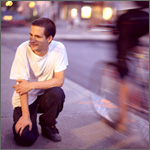
Another Montrealer, Scott Monteith has been releasing dub-laden minimal techno on a number of labels (notably Stefan Betke‘s ~scape imprint where his aquatic dub rumble helped solidify the label’s minimal aesthetic) and — expectations again — I thought he’d dazzle the room with a lighter touch. Instead, I get big bouncy house with strange undercurrents, all time-dilated and woozy. Disco rises up through the floor, a Gorgio Morodor slinkiness that reverberates around Deadbeat‘s powerful beat. Room-shaking sub-sonics rumble beneath cascading percussion and whispering clicks while time-stretched vocals laconically intone short poems of separation and loneliness as dappling percussion turns into rain against hotel-slick windows. Submarine pings follow, and they are the advance signal of the deep and massive dub echo. Eschewing all my notions of minimalism, Deadbeat (very much alive, thank you) veers into a funky twilight zone of — if I can believe my notes — disco dancehall house.
It is like being on drugs, I tell you. Not that anyone was taking anything (and, no, I didn’t get a contact high from the marijuana smoke rising up from stage right, that must have been someone else).
Akufen, the night’s headliner, comes on with a wry smile (and a t-shirt that sports “Akufen sucks!” on it) and a technology-heavy setup. Well, it’s just Final Scratch, but I’ve never seen it in action before and I get a little mesmerized by the laptop display of the rotating platters. Final Scratch is the electronic musician’s wet dream for being able to DJ without resorting to actual vinyl. Calibrated platters send back signals to the software which is folding a sound file over the virtual wheel of steel, allowing the artist to act like a scratcher without actually making a move on a piece of real vinyl. Akufen‘s got the moves down and the rapid flicker of his fingers across the fader and volume slider get all manner of responses from the audience. A micro-click session of slippery house, Akufen‘s music is like nano-burts right into the synaptic connections of your cortex where the payload lights your brain on fire. It makes you wiggle and giggle and dance out well past the midnight hour.
And, as the night splinters away into sweaty butt shaking and head wriggling, the questions raised by the Experimental Showcase start to fade. What you get out of music is what you bring to it, really. While being in the “mood” helps, we all know music can change the mood in any room with its ambiance and rhythm. It itches, doesn’t it? Gets under your skin and rubs your molecules together. “Dancing” is just a means of appreciation, an outward gesture of enjoyment that we give back to the performer much like opera audiences make the polite noises at set design or net-izens go all otaku about the focus of their obsessions. We hear, we move; the artist plays us as much as he or she plays their equipment. This is the cycle that perpetuates the rhythms of the music; each beat gives birth to a movement, each sound gives life to a sigh. We nourish one another, audience and artist. That’s what it is all about.






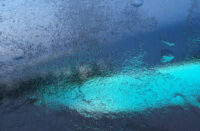
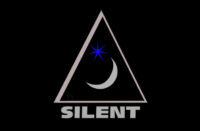



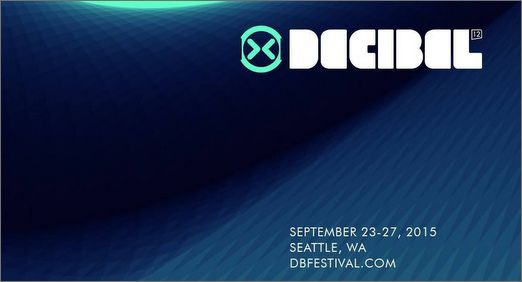
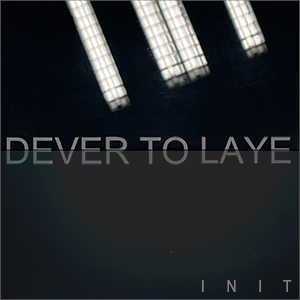


![Squaric :: 808 [Remixes] (Diffuse Reality) — [concise]](https://igloomag.com/wp/wp-content/uploads/2025/04/squaric-808-remixes_feat-75x75.jpg)







